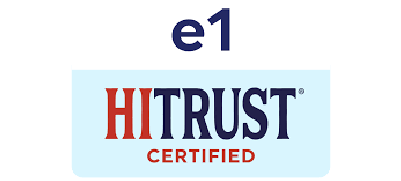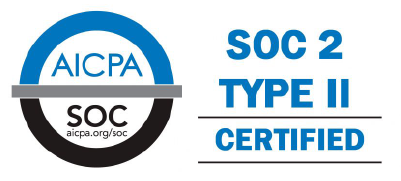- Seismic Shifts: Navigating breaking news and the reshaping of international landscapes.
- The Acceleration of Information Flow
- The Role of Social Media
- The Challenge of Misinformation
- Impact on International Relations
- Navigating the New Landscape
- The Role of Education
- The Future of Journalism
- International Cooperation and Regulation
Seismic Shifts: Navigating breaking news and the reshaping of international landscapes.
In an era defined by instant communication and interconnectedness, the rapid dissemination of breaking news has fundamentally altered the global landscape. Information travels at unprecedented speeds, shaping public opinion, influencing political discourse, and even triggering economic shifts. Understanding the dynamics of this accelerated news cycle, and its impact on international relations, is crucial for navigating the complexities of the 21st century. The ability to discern credible sources from misinformation, and to analyze events within a broader historical and geopolitical context, is becoming increasingly vital for informed citizens and policymakers alike. This new reality demands a constant reevaluation of how we process, interpret, and respond to the constant stream of information.
The Acceleration of Information Flow
The speed at which information now travels dramatically differs from even a decade ago. Social media platforms, 24-hour news channels, and digital media outlets have created a continuous cycle where events unfold in real-time and are immediately broadcast to a global audience. This immediacy, while providing benefits such as rapid alerts for emergencies, also presents challenges. The pressure to be first to report can lead to inaccuracies, sensationalism, and a lack of thorough fact-checking. The nature of algorithms and the prioritization of engagement metrics often reward divisive or emotionally charged content, further complicating the media environment. Consequently, the public is bombarded with a constant flow of information, making it difficult to distinguish fact from fiction.
| Traditional Media | Digital/Social Media |
|---|---|
| Slow dissemination; Editorial control | Rapid dissemination; Limited editorial control |
| Focus on in-depth reporting | Focus on immediacy and engagement |
| Wider reach, but slower | Narrower reach, but faster |
The Role of Social Media
Social media has become a primary source of information for many, particularly younger generations. Platforms like Twitter, Facebook, and Instagram provide instant updates on events as they unfold, often bypassing traditional media gatekeepers. While this can democratize access to information, it also creates the potential for the spread of misinformation and disinformation. The echo chamber effect, where individuals are only exposed to viewpoints that confirm their existing biases, is amplified on social media, further polarizing public discourse. The impact of algorithms that prioritize engagement over accuracy necessitates a critical approach to consuming information shared on these platforms. Verification of sources and cross-referencing information are crucial steps in navigating this complex landscape.
The Challenge of Misinformation
The proliferation of fake news and coordinated disinformation campaigns represents a significant threat to informed public discourse. State and non-state actors alike utilize these tactics to manipulate public opinion, sow discord, and undermine democratic institutions. Identifying and countering misinformation requires a multi-faceted approach, including media literacy education, fact-checking initiatives, and the development of algorithms that can detect and flag false information. However, striking a balance between combating disinformation and protecting freedom of speech remains a significant challenge. The complex interplay between technology, politics, and information warfare demands ongoing vigilance and critical evaluation.
Impact on International Relations
The speed and reach of modern communication have profoundly impacted international relations. Diplomatic crises can escalate rapidly as comments and actions are instantly scrutinized and widely disseminated. The potential for miscalculation and unintended escalation is heightened in this environment. Furthermore, the use of social media as a tool for influence operations presents new challenges to national security. Countries are increasingly engaging in cyber warfare and information warfare, attempting to shape narratives and manipulate public opinion in other nations. The need for clear communication channels, de-escalation strategies, and international cooperation is more critical than ever.
Navigating the New Landscape
Adapting to the new reality of rapidly evolving information requires a shift in how individuals, governments, and institutions approach media consumption and communication. Cultivating critical thinking skills, promoting media literacy, and supporting independent journalism are essential steps in building a more informed and resilient society. The responsibility to discern truth from falsehood lies not only with media organizations but also with individual citizens.
- Verify sources: Check the credibility of the information provider.
- Cross-reference information: Compare reports from multiple sources.
- Be aware of biases: Understand the potential perspectives influencing the reporting.
- Beware of emotionally charged content: Sensationalism often signals a lack of objectivity.
- Seek diverse perspectives: Avoid echo chambers and engage with differing viewpoints.
The Role of Education
Media literacy education is paramount in equipping individuals with the skills necessary to navigate the complex information landscape. This includes teaching critical thinking skills, fact-checking techniques, and an understanding of how algorithms and biases influence information delivery. Schools, libraries, and community organizations all have a role to play in promoting media literacy. Additionally, the development of educational resources and tools that can help individuals assess the credibility of information is crucial. Empowering citizens with the skills to critically evaluate information is essential for safeguarding democratic values and fostering a well-informed society.
The Future of Journalism
The financial pressures facing traditional journalism have led to a decline in investigative reporting and local news coverage. Addressing this requires finding sustainable funding models for independent journalism. Philanthropic support, government funding (with appropriate safeguards to ensure editorial independence), and innovative revenue models are all potential solutions. The role of citizen journalism and community media is also becoming increasingly important, providing alternative sources of information and giving voice to marginalized communities. Supporting a diverse and independent media landscape is crucial for holding power accountable and fostering informed public debate. Technological solutions like improving the transparency of algorithms and developing artificial intelligence tools that can detect misinformation can also play an important role.
International Cooperation and Regulation
Addressing the challenges posed by disinformation and information warfare requires international cooperation and shared regulatory frameworks. Countries must work together to counter state-sponsored disinformation campaigns, protect critical infrastructure from cyberattacks, and promote responsible behavior in the digital sphere. Establishing norms and standards for online content moderation, while respecting freedom of speech, is a complex but necessary task. Harmonizing regulations across different jurisdictions and fostering greater transparency in the operations of social media companies are crucial steps in creating a more secure and trustworthy information environment.
- Strengthen international mechanisms to address disinformation.
- Promote transparency in social media algorithms.
- Invest in media literacy education globally.
- Support independent journalism and investigative reporting.
- Develop common standards for online content moderation.
| Challenge | Potential Solution |
|---|---|
| Spread of Misinformation | Fact-checking initiatives, media literacy education |
| Erosion of Trust in Media | Supporting independent journalism, promoting transparency |
| Polarization of Public Discourse | Encouraging diverse perspectives, fostering critical thinking |
| Cyber Warfare and Information Operations | International cooperation, cybersecurity measures |
The reshaping of international landscapes continues, driven by the constant flux of information. Successfully navigating this era demands a population equipped to critically analyze the information they encounter, a dedication to supporting independent and reliable journalistic sources, and a commitment to collaborative international efforts to mitigate the dangers of disinformation. The future of informed decision-making, and therefore potentially global stability, hinges upon these components.



